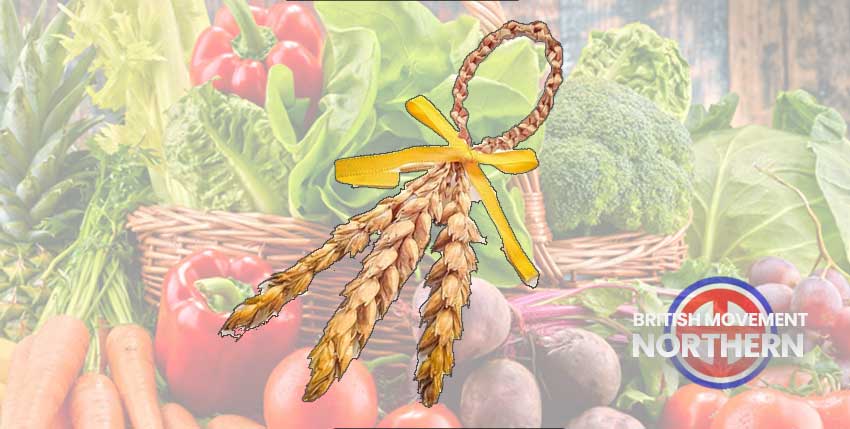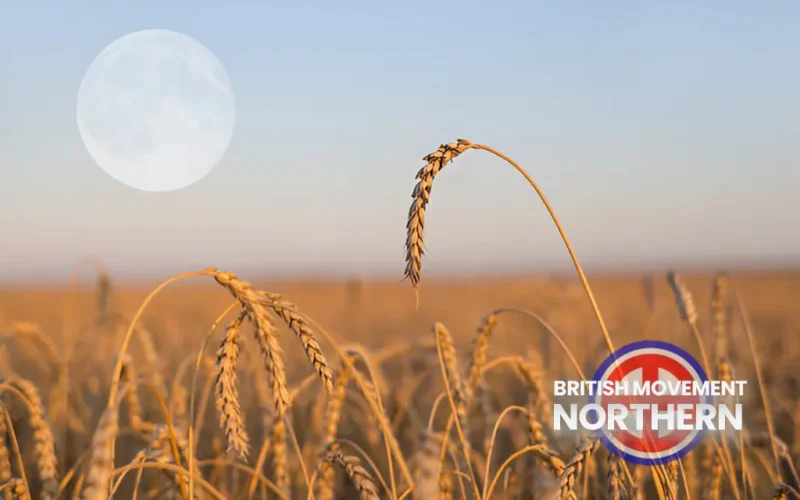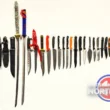In today’s multicultural Britain, many of our traditional celebrations are being lost as the festivals of the newcomers are given prominence. The downgrading and eventual erasing of our past is essential to the success of The Great Replacement.
Two that spring readily to mind are Maypole dancing and the Harvest Festival. Maypole dancing was a staple of every school curriculum up until the early 1970’s. It is a traditional folk dance conducted around a tall pole adorned with greenery or flowers, frequently decorated with ribbons that the dancers weave into intricate patterns. These dances are remnants of ancient rituals performed around a living tree, associated with spring ceremonies aimed at promoting fertility.
I was particularly pleased when reports of recent British Movement North West activities have mentioned the Harvest Festival, where activists have given food to indigenous people who have fallen on hard times.
The Harvest Festival, although pagan in origin, was commandeered by the church, and schools taught that the act of giving food to the needy was an act of Christian charity. Today, if it is celebrated at all, it is usually held on the Sunday near or on the Harvest Moon, the full moon which is nearest to that year’s Autumn Equinox (when day and night are of equal length). The Autumn Equinox usually falls around the 22nd September, so the Harvest Festival is usually celebrated in late September or early October.
Its name derives from the Old English word ‘Haerfest,’ meaning ‘Autumn.’ The church’s observance of this festival began in the Victorian era. Until the 20th century, the conclusion of the harvest season was marked by a significant meal known as the harvest supper, which welcomed all individuals who contributed to the harvest. This event was occasionally referred to as a “Mell-supper,” named after the final section of corn or wheat remaining in the fields, termed the “Mell” or “Neck.” The act of cutting this last patch symbolised the completion of the harvest work and the commencement of the celebratory feast.
Corn dolls were traditionally crafted for the Harvest Festival from the final sheath of the harvest. These dolls are preserved until spring to promote a bountiful crop in the subsequent year. During the festival, the doll is offered alongside a hare, which is concealed within the crops. This doll represents the goddess of grain, although in contemporary practices, a straw hare is used for the sacrifice instead.

Encyclopaedia Britannica traces the origins to “the animistic belief in the corn [grain] spirit or corn mother.” In some regions the farmers believed that a spirit resided in the last sheaf of grain to be harvested. To chase out the spirit, they beat the grain to the ground. Elsewhere they wove some blades of the cereal into a “corn dolly” that they kept safe for “luck” until seed-sowing the following year. Then they ploughed the ears of grain back into the soil in hopes that this would bless the new crop. In the early days, there were ceremonies and rituals at the beginning as well as at the end of the harvest
In Germany, from 1933 to 1937, the National Socialists arranged an annual harvest festival at Bückeberg, close to the city of Hamelin. The festival was one of the symbolically most important celebrations in the Third Reich; at its height, more than one million people gathered there. A special arena, designed by Albert Speer, was built to handle the large number of participants. Although extensive remains of this arena have survived, politicians from the bourgeoise parties have refused to recognise them as a historical monument.
Credits:
All Images: Public Domain
The British Movement welcomes articles for possible inclusion on this site from members and supporters across the North of England. Please remember that we have to operate within the laws of this country; we will not include any content that is against the current laws of the United Kingdom. News reports should be topical and relevant to the regions covered by this website.












